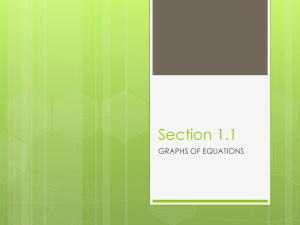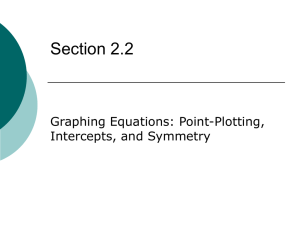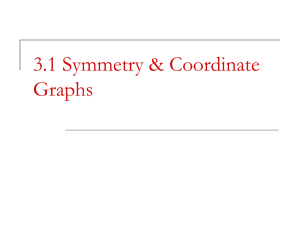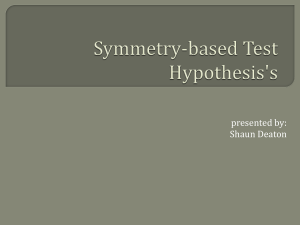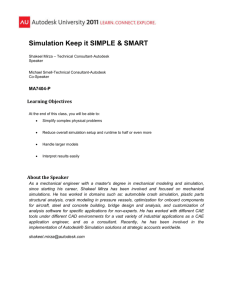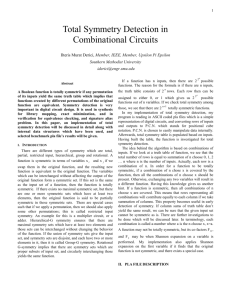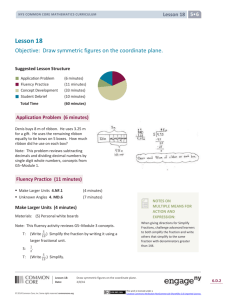simplify graph
advertisement
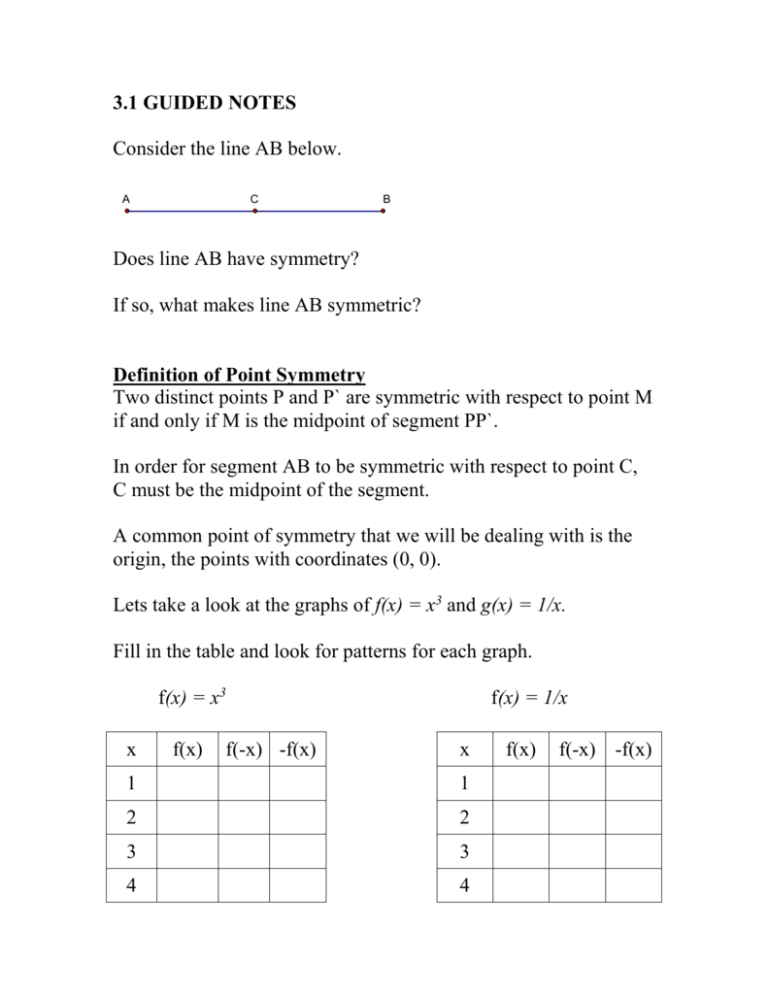
3.1 GUIDED NOTES Consider the line AB below. A C B Does line AB have symmetry? If so, what makes line AB symmetric? Definition of Point Symmetry Two distinct points P and P` are symmetric with respect to point M if and only if M is the midpoint of segment PP`. In order for segment AB to be symmetric with respect to point C, C must be the midpoint of the segment. A common point of symmetry that we will be dealing with is the origin, the points with coordinates (0, 0). Lets take a look at the graphs of f(x) = x3 and g(x) = 1/x. Fill in the table and look for patterns for each graph. f(x) = x3 x f(x) f(-x) -f(x) f(x) = 1/x x 1 1 2 2 3 3 4 4 f(x) f(-x) -f(x) What is similar for these two tables? A function has a graph that is symmetric with respect to the origin if and only if f(-x) = -f(x) for all x in the domain of f. That is, the point w/ coordinates (x, y) maps onto the point w/coordinates (-x, -y). NOTE: Functions whose graphs are symmetric to the origin are called odd functions. Try these next two examples on your own or with a partner. Determine if each function is symmetric about the origin. f(x) = x6 f(x) = -3x3 + 5x What else can things be symmetric to in a coordinate plane? How about lines of symmetry? Some common lines of symmetry are the y-axis, the x-axis, the line y = x, and the line y = -x. First let’s look into lines of symmetry about the y-axis. f(x) = |x|, we have seen this before. What kind of function is this? What does it look like if I were to graph it? x -2 -1 0 1 2 f(x) 2 1 0 1 2 Plug the pt (1, 1) into the equation and simplify. What happens? Plug the pt (-1, 1) into the equation and simplify. What happens? Does this graph appear to have symmetry? If so, what type? In order for the graph of a function to be symmetric over the y-axis, the point (x, y) must map onto the point (-x, y). (x, y) (-x, y) NOTE: Functions whose graphs are symmetric to the y-axis are called even functions. Definition of Line Symmetry Two distinct points P and P` are symmetric with respect to line AB if and only if line AB is the perpendicular bisector of segment PP`. Next, let’s take a look at symmetry about the x-axis. What if we have the equation x = |y|. What does this look like? x 2 1 0 1 2 f(x) -2 -1 0 1 2 Plug the pt (1, 1) into the equation and simplify. What happens? Plug the pt (1, -1) into the equation and simplify. What happens? Does this graph appear to have symmetry? If so, what type? In order for the graph of a function to be symmetric over the x-axis, the point (x, y) must map onto the point (x, -y). (x, y) (x, -y) Next, lets take a look at symmetry with respect to the line y = x. What if we had the equation y = 6/x? What does this look like? x 1 2 3 4 5 6 f(x) 6 3 2 1.5 1.2 1 Plug the pt (1, 6) into the equation and simplify. What happens? Plug the pt (6, 1) into the equation and simplify. What happens? Does this graph appear to have symmetry? If so, what type? In order for the graph of a function to be symmetric over the line y = x, the point (x, y) must map onto the point (y, x). (x, y) (y, x) Next, lets take a look at symmetry with respect to the line y = -x. Lets look at the same function as before y = 6/x. x 1 2 3 4 5 6 F(x) 6 3 2 1.5 1.2 1 Plug the pt (1, 6) into the equation and simplify. What happens? Plug the pt (-6, -1) into the equation and simplify. What happens? Does this graph appear to have symmetry? If so, what type? In order for the graph of a function to be symmetric over the line y = x, the point (x, y) must map onto the point (y, x). (x, y) (-y, -x)
